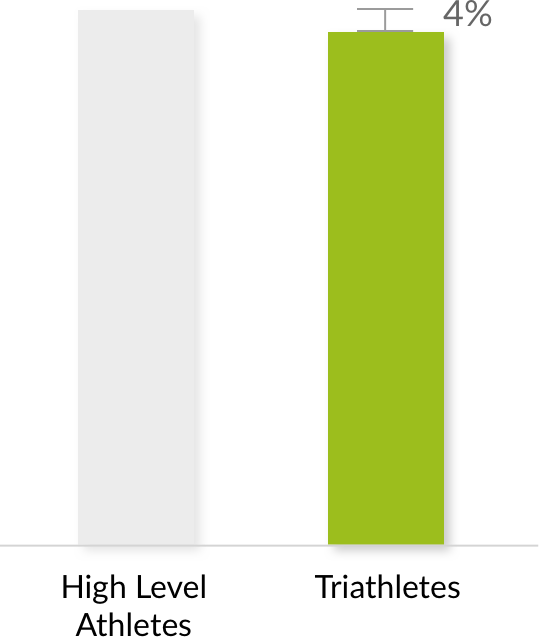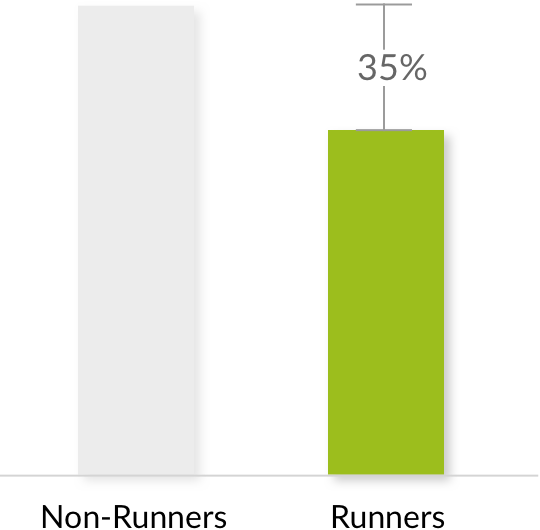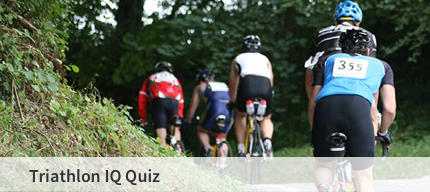
 Triathletes & Mortality
Triathletes & Mortality
According to a 2014 study published in the Mayo Clinic Proceedings, high-level athletes live longer than the general population and enjoy a 27% lower level of mortality from cardiovascular disease and a 40% lower level of mortality from cancer.
The goal of this meta-analysis was to provide an accurate overview of mortality in elite athletes compared to the general population. Due to the recent discussions over a possible threshold of cardiovascular benefits in endurance athletes, the researchers were examining if the overall health benefits of exercise would counteract any potential detrimental effects. Researchers reviewed English-language scientific articles available in Medline and Web of Science databases following the recommendations of the Meta-analyses Of Observational Studies in Epidemiology group. Ten studies met all inclusion criteria and included data from a total of 42,807 athletes. The evidence available indicates that top-level athletes live longer than the general population and have a lower risk of 2 major causes of mortality, namely, CVD and cancer.
Garatachea et al., Mayo Clin Proc. 2014;89(9):1195-1200

Cardiovascular Mortality
According to a 2014 study published in the Mayo Clinic Proceedings, high-level athletes live longer than the general population and enjoy a 27% lower level of mortality from cardiovascular disease and a 40% lower level of mortality from cancer.
The goal of this meta-analysis was to provide an accurate overview of mortality in elite athletes compared to the general population. Due to the recent discussions over a possible threshold of cardiovascular benefits in endurance athletes, the researchers were examining if the overall health benefits of exercise would counteract any potential detrimental effects. Researchers reviewed English-language scientific articles available in Medline and Web of Science databases following the recommendations of the Meta-analyses Of Observational Studies in Epidemiology group. Ten studies met all inclusion criteria and included data from a total of 42,807 athletes. The evidence available indicates that top-level athletes live longer than the general population and have a lower risk of 2 major causes of mortality, namely, CVD and cancer.
Garatachea et al., Mayo Clin Proc. 2014;89(9):1195-1200
 Triathletes & Recovery Heart Rate
Triathletes & Recovery Heart Rate
A 2014 study of Spanish elite male athletes found that during recovery from maximum exertion, the heart rate of dynamic endurance athletes, including triathletes, drops 4% more than other elite athletes in the second minute of recovery, a significant difference.
The recovery heart rate is a fitness metric. During postexercise recovery, heart rate (HR) initially falls rapidly, followed by a period of slower decrease, until resting values are reached. The goal of the study was to examine the differences in the recovery heart rate (RHR) between athletes engaged in static and dynamic sports. The study subjects were 294 national and international level athletes. The athletes were subjected to a maximum exertion stress test and their HR recorded at 1, 2, 3 and 4 min into the HR recovery period along with other indices of recovery heart rate. Two way ANOVA was used to examine differences between the two groups.
Penaido, et al. J Sports Med Phys Fitness. 2014 Jun;54(3):264-70.

Triathletes & Recovery Heart Rate
 Triathletes & Biological Aging
Triathletes & Biological Aging
According to a 2016 study in the Journal of Applied Physiology, endurance athletes, including triathletes, who trained more than three times a week had 7.1% longer telomeres (a marker of cardiometabolic health) and a 26% lower resting heart rate compared to recreationally active healthy controls. The endurance athletes had prevented 10.4 years of biological aging.
Leukocyte telomeres shorten with age. Exercise training may prevent age-related cardiometabolic diseases by maintaining telomere length. Researchers compared 122 high level endurance athletes —cyclists, triathletes, middle- or long-distance runners, and ultra-marathon runners—to recreationally active controls. The endurance athletes consistently trained more than three times per week for a minimum of 1 year. Although the researchers found that endurance athletes had significantly longer leukocyte telomeres, this was no longer significant after adjusting for resting heart rate and relative VO2 max. Resting heart rate emerged as an independent predictor of telomere length, and the researchers further found a dose-response effect with exercise volume.
Denham et al. J App Pays (2016)

Triathletes & Biological Aging
According to a 2016 study in the Journal of Applied Physiology, endurance athletes, including triathletes, who trained more than three times a week had 7.1% longer telomeres (a marker of cardiometabolic health) and a 26% lower resting heart rate compared to recreationally active healthy controls. The endurance athletes had prevented 10.4 years of biological aging.
Leukocyte telomeres shorten with age. Exercise training may prevent age-related cardiometabolic diseases by maintaining telomere length. Researchers compared 122 high level endurance athletes —cyclists, triathletes, middle- or long-distance runners, and ultra-marathon runners—to recreationally active controls. The endurance athletes consistently trained more than three times per week for a minimum of 1 year. Although the researchers found that endurance athletes had significantly longer leukocyte telomeres, this was no longer significant after adjusting for resting heart rate and relative VO2 max. Resting heart rate emerged as an independent predictor of telomere length, and the researchers further found a dose-response effect with exercise volume.
Denham et al. J App Pays (2016)
 Triathletes & Cataracts
Triathletes & Cataracts
According to a 2009 study in the Journal of Investigative Ophthalmology & Visual Science, runners have a 35% reduction in risk of cataracts later in life.
The study tested over 40,000 male and female runners. The results show that higher doses of vigorous physical activity and greater cardiorespiratory fitness reduced the risk for incident cataract in a large prospective study of runners. Some, but not all of these associations, were attributable to the leanness of the faster, higher mileage runners.
Paul T. Williams, Invest Ophthalmol Vis Sci. 2009 Jan;50(1):95-100. (doi: 10.1167/iovs.08-1797)

Triathletes & Cataracts


We are a licensed life insurance agent* in all 50 states.
View our licenses
We negotiated lower rates on life insurance using science and data.
View our research
By triathletes for triathletes. Our team is comprised of health conscious people who overcame their own health challenges with healthy habits, exercise, and nutrition.
Meet our team
















